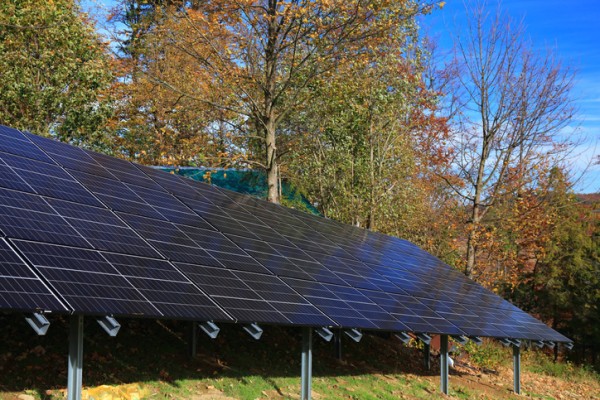
If you’re planning a home renovation and considering solar power, ground-based solar arrays can be a great option—especially if your roof isn’t suitable for solar panels or you want to maximise energy production. Here’s what you need to know before installing a ground-based solar system.
What is a ground-based solar array?
A ground-based solar array is simply a set of solar panels installed on the ground, usually on a frame or mounting system, rather than on your roof. These arrays can be fixed or use tracking systems that follow the sun’s path to boost efficiency.
When should you consider a ground-based solar array?
- Roof limitations: If your roof is shaded, has a poor orientation, or isn’t strong enough to support panels, ground arrays can be a smart alternative.
- Space availability: If you have enough yard space, a ground array may allow you to install more panels than on your roof.
- Maintenance: Ground arrays are easier to clean and maintain since they’re accessible without ladders.
For more on choosing the right solar panels, see our article on solar panel types and tips.
Planning and permits
Before installing a ground-based solar array, check with your local council about any planning permits or restrictions. Some areas have rules around:
- Maximum height of the mounting structure
- Setbacks from property boundaries
- Visual impact or neighbourhood covenants
Also, make sure to consult your energy retailer or distributor about connecting a new solar system to the grid.
Installation considerations
- Mounting system: Ground mounts come in fixed frames or adjustable tilt systems. Some advanced systems track the sun for higher output but cost more upfront.
- Orientation and tilt: Aim for a north-facing orientation in Australia, with tilt angles close to your latitude (usually between 25° and 35°).
- Wiring and inverter placement: Keep wiring runs as short as possible to reduce energy loss. The inverter should be installed in a shaded, ventilated area close to the panels or your switchboard.
- Security: Consider fencing or other protection to prevent damage or theft.
Cost and rebates
Ground-based solar arrays tend to cost more than roof-mounted systems due to the extra materials for mounting and wiring. However, they can be more productive if your roof isn’t ideal.
You may be eligible for current solar rebates and incentives. Check our updated article on solar panel rebates in Australia to see what’s available.
Maintenance and longevity
Regular cleaning and inspections keep your solar system working efficiently. Ground arrays are easier to access for cleaning dust, leaves, and debris. Keep an eye out for any loose wiring or corrosion, especially after storms.
Solar panels generally last 25 years or more, and most come with long warranties.
Final tips for renovators
- If you’re renovating your yard or garden, plan your ground-based solar array early to avoid disrupting other landscaping work.
- Make sure the site has no shading from trees or new structures.
- Consult a licensed solar installer experienced with ground mounts to design the system for your needs.
Ground-based solar arrays offer flexibility and can be an excellent way to generate your own clean electricity when roof space is limited or unsuitable.





